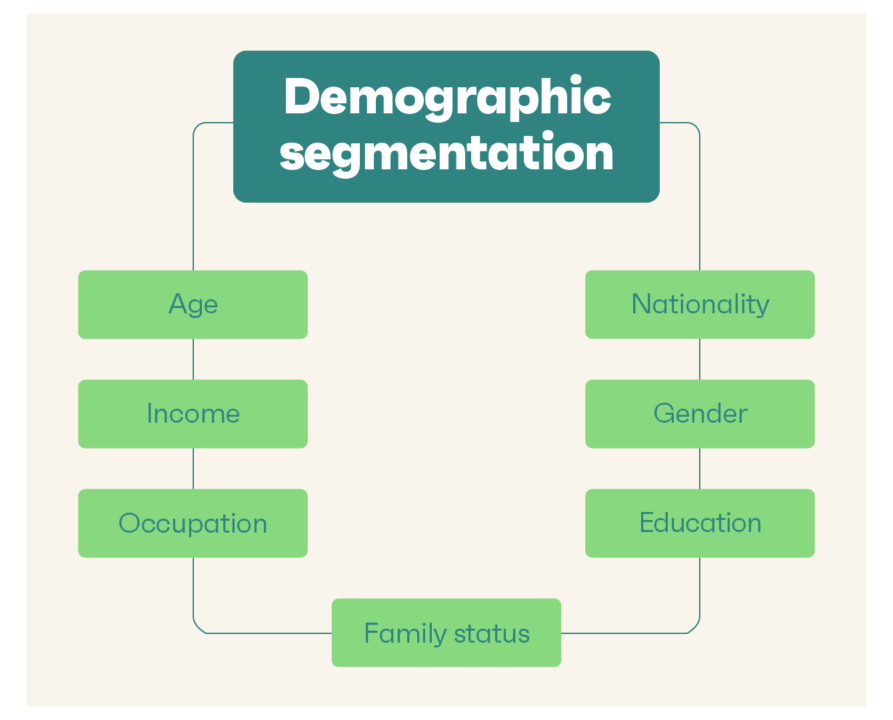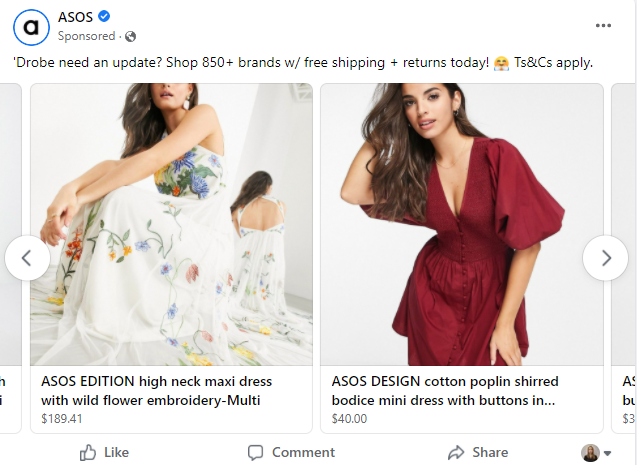What Is Demographic Segmentation? Definition, Types, and Examples
Reading Time:
6
minutes
Segmenting your customers helps to discover what makes your customers tick. Demographics is an ideal entry point to segmentation because it tackles non-character traits like age and gender.
With demographic segmentation, you’ll be able to focus your time and resources on the customers who are most likely to buy.
Let’s get you started.
In this post you’ll learn:
- Definition of demographic segmentation
- Demographic segmentation variables
- Why you should segment customers by demographics
- Examples of demographic marketing
Mục Lục
What is demographic segmentation?
Demographic segmentation is a method of splitting your subscribers based on demographic factors like gender, age, location, income, and more. Doing this makes it easier to understand your various types of customers and their particular needs and interests.
Rather than blasting subscribers with generic emails, demographic segmentation allows you to reach out with more targeted messaging. It also means that you can focus your time and resources on customers most likely to resonate with your brand and make a purchase.
Now that we’ve defined demographic segmentation, let’s take a look at some common demographic segmentation variables used in ecommerce marketing.

Demographic segmentation variables
The following methods of demographic segmentation are the most common and useful for helping businesses to personalize their marketing.
Age
Segmentation by age helps to define the right kind of marketing messages and communication channels. For example, a younger audience might respond better to certain social media channels than to email or SMS.
Categories include children, adolescents, adults, and senior adults. You can also spilt these categories into different generations. For example generation Z would be interested in different products than other generations.
Nationality
People of different nationalities can have different expectations and needs. For example, marketing that could be considered acceptable in one country could come across as pushy and overbearing in another. This is also a great opportunity to send out promotions related to national holidays or events.
Gender
A person’s gender might also impact their browsing and purchasing behavior. For example, a product like perfume, that’s usually marketed to females, might seem irrelevant for most males in your subscriber list. Understanding the gender appeal of your products helps to personalize your marketing more effectively.
Income
A customer’s income defines their buying ability and preferences. For example, high-income customers may be looking for luxury products and prefer messaging over exclusive channels.
Lower-income customers respond well to the kind of deals/discounts offered around Black Friday. Subscribers can be split into lower, middle, and upper-income.
Education
This variable assumes that education affects a person’s income and lifestyle. Categories include primary education, secondary education, college, and university.
For example, subscribers with higher education might be more interested in complex and cultural products, while students could respond well to things like laptops and books.
Occupation
This variable also affects income and, therefore, price preferences. It also allows brands to offer products that cater to specific professions. Protective clothing for those in the construction industry would be a good example.
Family status
Here you can reach out with different strategies to people at various stages of their lives. For example, people with large families might prefer products that appeal to or help with children. On the other hand, single people might prefer to treat themselves more with luxury products.
Besides demographics, online businesses also use behavior-related variables, including spending and engagement. This Guide to Five Retail Customer Segmentations has more info and examples if you’re interested.
Why is demographic segmentation important?
You can gain the following benefits by implementing the right demographic segmentation variables for your particular business:
- Higher customer retention: When customers are getting the right kind of information and recommendations, they feel valued and understood. People are much more likely to stick with a brand that knows their needs, so your customer retention rates are likely to increase with effective segmentation.
- Effective marketing campaigns: By identifying your key customers and their particular needs, you’ll be able to create marketing campaigns that are tailor-made for them. This will result in better delivery statistics, higher engagement, and ultimately, more revenue.
- Lasting customer relationships: Reaching out with personalized messaging helps to build long-lasting relationships with customers. Not only are they more likely to stick around in the long-term, but they’ll be happy to recommend your brand to their friends and families too.
- More personalized products and services: When you properly understand your target customer’s needs and preferences, you can offer the kinds of products that you know will resonate with them.
- Appropriate product pricing and distribution: Similarly, knowledge of customer income and location allows for more accurate pricing and distribution services.
Proper segmentation is a must for customer retention. This guide can help take the guesswork out of retention marketing: Retain More Customers with Lifecycle-Based Segmentation.
Demographic segmentation examples
So now that we know the how and why of demographic segmentation, let’s see how brands are applying different variables in real life to personalize their marketing.
#1 Age-based segmentation
One Dollar Shave Club identified their core audience as men aged 18-34 years and decided to focus their marketing accordingly. They consistently reach out with playful, positive, and humorous messages, creating engaging marketing directed at the right people.
This well-defined approach, crafted with effective demographic segmentation, has played a key role in the success of One Dollar Shave Club over the past few years. Check out the examples below:
#2 Segmentation based on gender
Businesses also need to consider differences across genders when creating marketing materials.
This Facebook ad from clothing retailer ASOS was created specifically for female customers because it features products for women. It’s shown only to female Facebook users as the chances of an average male finding this particular ad to be relevant to them is slim.

#3 Segmentation based on family status
People have different needs depending on their family status. Targeting subscribers based on their family status allows you to market products that suit their particular lifestyle, as we can see in the following example.
This ad by Volkswagen shows the practicality of their new model for large families. It shows the activity and togetherness of family days out, with plenty of room for kids, dogs, and other equipment. It is targeted toward young professionals with one or more young children and has an emphasis on space and fun.
#4 Income-based segmentation
Different income levels require different marketing strategies. In this example, Rolls Royce is aiming at a high-income demographic with an ad that oozes luxury and exclusivity.
Exclusivity is a key concept in marketing luxury goods. High-income customers are often looking for something that sets them apart from others, so a product’s uniqueness should always be emphasized.
Rolls Royce does this with an artistic piece of cinema, capturing the elegance of their new release and keeping the message simple and direct—we offer something that’s especially for you.
#5 Occupation-based segmentation
Marketing for products that are designed to help people work should naturally appeal to specific occupations. Office workers especially have similar relationships, tasks, and issues that they can recognize, something that is captured in our final example.
This ad by Clickup, a project management software, targets consultants, project managers, and freelancers. In the video, they humorously portray various office situations that can hinder collaboration and focus. We find relatable office characters, including the awkward manager and wacky CEO, and are presented with the answer to common office problems.
Feel like checking out more examples? See these Four Customer Segmentation Examples from Ashley Jewels, Jockey, and other brands.
Demographic segmentation benefits
The vast benefits that demographic segmentation in marketing can bring to your business include:
- Better personalization
- Customer retention and loyalty
- More relevant products
- Higher advertising effectiveness
- Advantage over competitors
- More effective lead generation
And there’s so much more. For a relatively simple strategy that requires little more than a good marketing automation tool, demographic segmentation delivers an impressive bang for your buck.
Demographic segmentation: summary
If you’re not segmenting your audience by now, now is the perfect time to start. Demographic segmentation is a great way to begin your segmentation journey, offering a variety of simple and effective variables to choose from. It drives rapid growth and is an easy way to personalize your marketing while increasing customer retention.
Once you get the hang of it, you can dig even deeper into more advanced forms of segmentation based on things like purchase and browsing behavior—the options are endless. Check out Omnisend as your all-in-one tool for automated marketing and advanced segmentation. With just a few clicks, you’ll be segmenting like a pro in no time!
Get started with Omnisend today & drive sales on autopilot with pre-built automation workflows
Start Free Today







